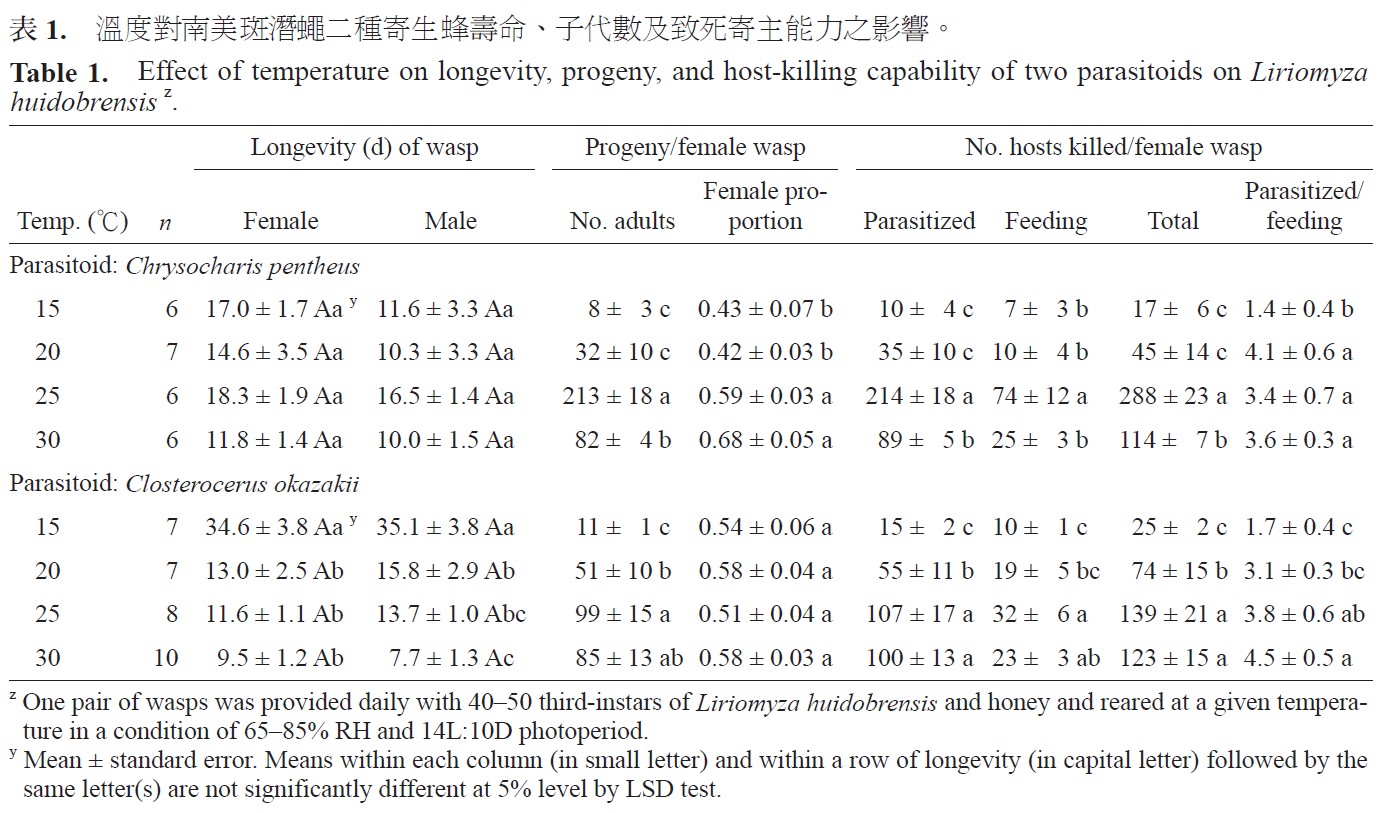All issues

Author:Ching-Chin Chien* and Shu-Chen Chang
Abstract:
Liriomyza huidobrensis (Blanchard), is one of the major pest of winter vegetables in Taiwan and it prefers cool climate. Chrysocharis pentheus (Walker) and Closterocerus oka-zakii (Kamijo) are the parasitoids, attacking larvae of L. huidobrensis. The objective of this study was to determine effect of temperature on killing of larvae of L. huidobrensis by the parasitoids C. pentheus and C. okazakii. The experiments were conducted under four constant temperatures, 15, 20, 25 and 30℃. The total number of hosts killed by C. pentheus was 17, 45, 288 and 114 at 15, 20, 25 and 30℃, respectively; the total number of hosts killed by C. okazakii was 25, 74, 139 and 123 at 15, 20, 25 and 30℃, respectively. Results showed that host-killing capability was signifcantly higher at 25 and 30℃ than at 15 and 20℃ for both parasitoids, with the highest number of host-killing at 25℃ for C. pentheus.
Key words:Chrysocharis pentheus, Closterocerus okazakii, Liriomyza huidobrensis, Temperature, Host-killing capability
Download:![]() PDF Links
PDF Links
- 1. Using Digital Soil Mapping to Predict Soil Organic Carbon Stocks in Zhuoshui River Basin
- 2. Development of a Technique for Forecasting (or Pre-Detection) Anthracnose Disease Incidences of Green Mature Bagging Mango Fruits
- 3. Taxonomic Review of the Genus Asiophrida Medvedev, 1999 in Taiwan (Insecta: Coleoptera: Chrysomelidae: Galerucinae: Alticini), with Notes on Biology
 Submit your manuscript
Submit your manuscript
 Guide for authors
Guide for authors